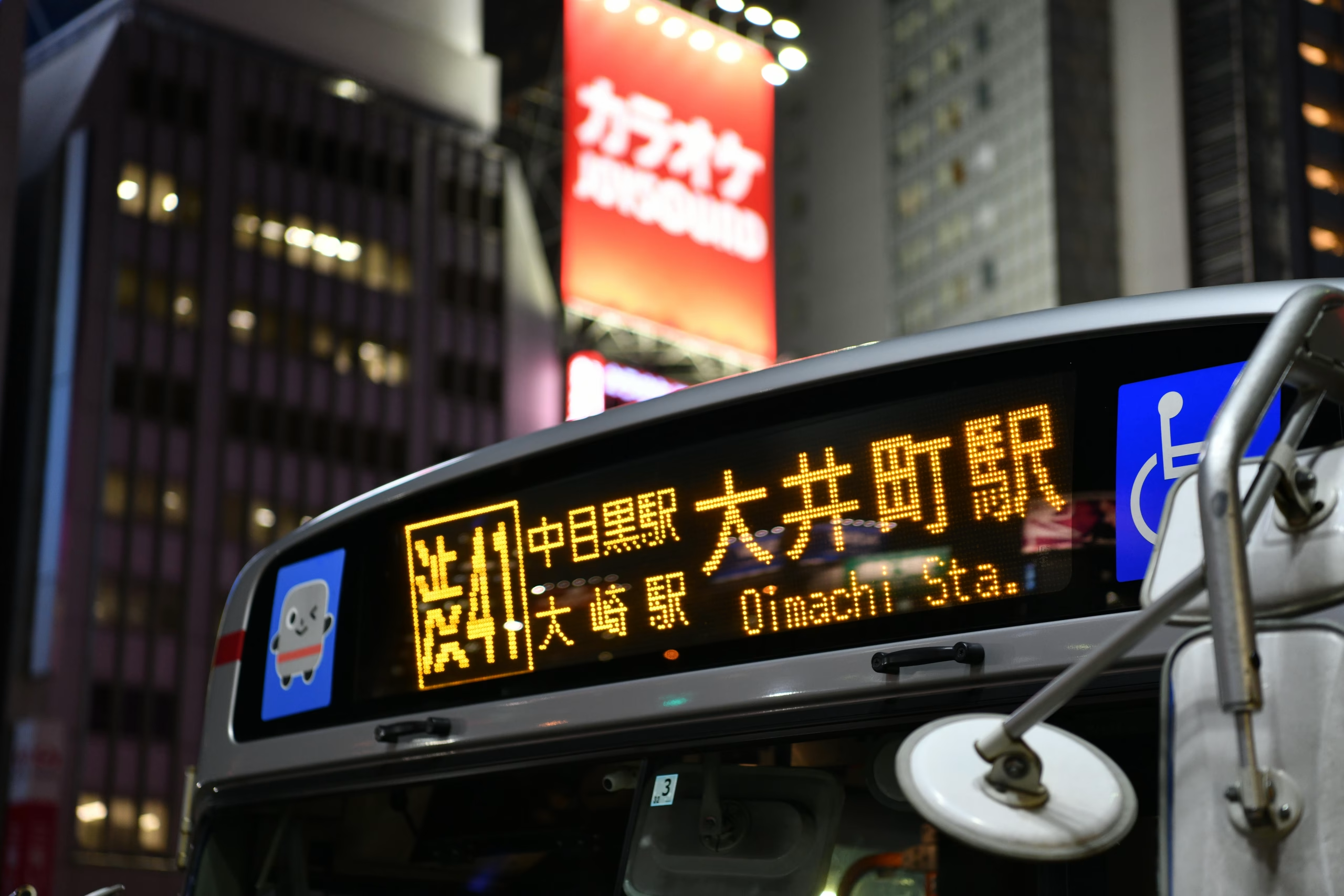Navigating the Japan Bus System: A First Timer’s Guide to Effortless Travel

Navigating Japan’s intricate bus system can seem daunting to first time travelers in the country, but it’s an essential part of experiencing the country’s vibrant culture. Known for its punctuality and efficiency, Japan’s buses offer a reliable mode of transportation, connecting urban centers with rural landscapes. Whether you’re visiting bustling Tokyo or the serene countryside, understanding how to use the bus system will enhance your travel experience.
For those unfamiliar with the language and customs, the prospect of boarding a Japanese bus might feel overwhelming. However, with a bit of guidance, newcomers can quickly learn to navigate this complex network with ease. From purchasing tickets to understanding route maps, mastering the basics will make your journey smoother and more enjoyable.
Japan’s bus system is not just about getting from point A to B; it’s a window into the daily life of its people. Embracing this mode of transport offers a unique perspective on the country’s rich traditions and modern innovations.
Overview Of The Japan Bus System
The Japan bus system integrates urban and rural transportation, offering a comprehensive network across the country. It consists of local buses enabling short-distance travel within cities and long-distance express buses connecting major urban centers. Known for punctuality, buses usually adhere strictly to their schedules, ensuring travelers reach their destinations on time.
Fares vary depending on distance and bus type. Local bus fares typically start at ¥210 in cities like Tokyo. Express buses offer economical travel options between cities, with fares often undercutting those of trains, particularly for long distances. Companies like Willer Express and JR Bus operate these services.
Payment is flexible, accommodating cash, prepaid IC cards such as Suica and Pasmo, and mobile apps. Displays show fare information, making navigation easy for those unfamiliar with the language. Many buses feature English announcements and signage, aiding newcomers.
Bus stops marked with distinctive signs display route numbers and schedules in both Japanese and English. Major stations often have maps offering route and network insights, helpful for orienting travelers.
The system not only caters to regular commuters but also to tourists, with buses reaching landmarks and attractions from popular cities. They provide guided tours, allowing deep exploration of cultural sites. Whether navigating cityscapes or countryside, travelers experience Japan’s culture firsthand through their bus journeys.
Understanding Bus Routes And Schedules
Japan’s bus routes and schedules are designed to be intuitive, even for those unfamiliar with the language or customs. Buses operate with precision across well-defined routes in both cities and rural regions. Each route is designated by a number, displayed prominently on buses and at stops, ensuring riders can easily identify their intended bus.
Schedules adhere to punctual departures and arrivals, reflecting Japan’s commitment to timekeeping. Bus timetables are available in Japanese and English at key stations and online platforms. Peak times often see increased service frequencies, accommodating the high demand during morning and evening hours.
Digital tools like Google Maps or local apps such as Navitime provide route planning assistance, enhancing ease of travel. Such tools display real-time bus arrival times, optimizing the travel experience for newcomers. Several bus companies also maintain multilingual websites, providing detailed route and schedule information.
Purchasing Bus Tickets
Newcomers navigating Japan’s bus system find purchasing tickets straightforward with numerous options. Understanding ticket types and purchase locations aids in seamless travel.
Types Of Tickets
Japan offers various bus tickets to accommodate different travel needs. Single-ride tickets, often used for short distances, can be purchased directly on the bus. Commuter passes benefit frequent travelers, offering unlimited rides within specific zones and validity periods. Discounted tourist passes suit those exploring regions over several days, providing economical solutions for multi-day travel.
Where To Buy Tickets
Travelers buy tickets in several convenient locations. Onboard purchases accept cash, and some buses use prepaid IC cards for swifter transactions. For advance tickets, kiosks in bus terminals and major railway stations offer service. Digital platforms, including bus company websites and mobile apps, facilitate online ticket purchases, providing options like seat reservations for long-distance travel.
Navigating The Bus Stations
The efficient layout of Japan’s bus stations ensures an easy navigation experience for newcomers. With clear signage and maps, the system guides passengers to their destinations smoothly.
Signage And Maps
Japanese bus stations feature multilingual signage to aid travelers. Signs display crucial information such as bus numbers, final destinations, and departure times, often in both Japanese and English. Key areas in stations house comprehensive maps that highlight routes and nearby landmarks. These maps, together with digital kiosks, provide visual and interactive assistance for route planning. By using such resources, even those unfamiliar with the locale can confidently locate their buses and desired destinations.
Key Tips For Non-Japanese Speakers
Non-Japanese speakers benefit from utilizing English-language resources available at bus stations. Many stations offer multilingual staff or information desks equipped to assist with inquiries. Using mobile applications like Google Maps or Navitime, which contain route data in English, enhances the travel experience. These apps offer real-time updates and can pinpoint current locations. Always carry a small phrasebook or use translation apps to bridge any language gaps in unexpected situations. Taking note of key bus numbers and their respective kanji characters helps in identifying the correct buses when English resources are limited.
Etiquette And Rules On Japanese Buses
Passengers on Japanese buses are expected to adhere to certain etiquette and rules that reflect the country’s cultural norms. Quiet environments are maintained, as talking on cell phones or speaking loudly is generally discouraged. This ensures a peaceful journey for all.
Luggage should be managed responsibly. Commuters are encouraged to store bags on their laps or in overhead compartments if available, keeping aisles clear for easy access and safety. Priority seating areas, known as “yuusensen,” are reserved for the elderly, disabled, pregnant women, and those with small children. It’s respectful to offer your seat to those in need in these areas.
Food consumption is not typical on buses. While drinks might be discreetly consumed, eating is often frowned upon except on specific long-distance services. Maintaining cleanliness is important.
Bus passengers should enter and exit in an orderly fashion. In most systems, boarding takes place from a rear door, while alighting uses the front, ensuring traffic flows smoothly. Offering payment or scanning IC cards upon exiting is the norm.
Gratitude is a common formality. Expressing thanks to the driver upon exiting, by nodding or with a simple “arigato gozaimasu” in Japanese, reflects appreciation. Visitors can integrate better with local cultures by observing these practices and understanding the customs of bus travel in Japan.
Tips For A Smooth Bus Journey
Newcomers navigating Japan’s bus system can enhance their experience by considering several helpful tips that facilitate a smooth journey.
Plan Ahead: Research bus routes and schedules in advance to optimize travel time. Using online tools like Google Maps and Navitime ensures access to real-time bus information, which is essential for efficient route planning.
Understand Payment Options: Familiarize yourself with payment methods, such as IC cards and mobile apps. Having the correct fare prepared helps avoid delays and confusion when boarding.
Recognize Stops: Observation is key for identifying bus stops, which feature route numbers and schedules prominently displayed in Japanese and English. Note landmarks or use digital apps for accurate stop recognition.
Boarding Practices: Ensure an orderly entry by forming a line and waiting patiently. Priority seating is designated for elderly or disabled passengers; respecting these areas is customary and courteous.
Manage Personal Space: Minimize luggage interference by placing bags on laps or in designated areas. Quiet conduct is expected; passengers typically refrain from loud conversations or phone calls.
Departure Etiquette: As buses maintain strict schedules, prepare to alight quickly upon reaching your stop. Expressing gratitude to the driver (‘Arigato gozaimasu’) upon exit is appreciated.
These strategies, when combined with the system’s inherent efficiency, assist newcomers in navigating Japan’s intricate bus network with confidence.
Benefits Of Using The Japan Bus System
Japan’s bus system offers several advantages that make it an attractive option for newcomers. Cost-efficiency characterizes the system, with affordable fares compared to other transportation modes. Flexible payment options, including cash and prepaid IC cards like Suica and Pasmo, enhance convenience for users.
Punctuality defines Japanese buses, adhering strictly to schedules and ensuring timely arrivals, which benefits daily commuters and tourists. Accessibility exemplifies the system through comprehensive networks covering urban and rural areas and offering easy connections between major landmarks and attractions. Many routes feature English signage and announcements, simplifying travel for non-Japanese speakers.
Immersion into Japanese culture is facilitated by using the bus system, allowing passengers to observe everyday life and local customs. The system offers eco-friendly travel choices, contributing to reduced carbon emissions compared to individual car use. Utilizing the Japan bus system improves travel experiences by combining affordability, reliability, and cultural exposure.
Key Takeaways
- Efficient and Punctual: Japan’s bus system is renowned for its punctuality and efficiency, making it a reliable transportation option for both urban and rural travel.
- User-Friendly for Newcomers: With English signage, announcements, and helpful resources, Japan’s bus system is accessible to non-Japanese speakers, easing the navigation for newcomers.
- Flexible Payment Methods: The system supports various payment options, including cash, prepaid IC cards like Suica and Pasmo, and mobile apps, enhancing convenience.
- Cultural Exposure: Riding Japanese buses provides travelers with insights into local customs and daily life, enriching the cultural experience.
- Cost-Effective Travel: Compared to other transportation modes, buses offer economical fares, particularly for long-distance travel, providing an affordable option for tourists and commuters.
- Planning Tools Available: Digital tools and apps such as Google Maps and Navitime assist in route planning and real-time updates, ensuring a smooth bus journey.
Conclusion
Navigating Japan’s bus system offers newcomers an efficient and culturally enriching travel experience. With its punctuality and comprehensive network, the system ensures seamless connections between urban and rural areas. Newcomers can rely on clear signage, multilingual resources, and flexible payment options to simplify their journeys. By embracing local customs and etiquette, travelers not only enhance their understanding of Japanese culture but also contribute to a respectful and harmonious environment. The Japan bus system stands out as a cost-effective and eco-friendly transportation choice, making it an ideal option for those eager to explore the country’s diverse landscapes and traditions.


